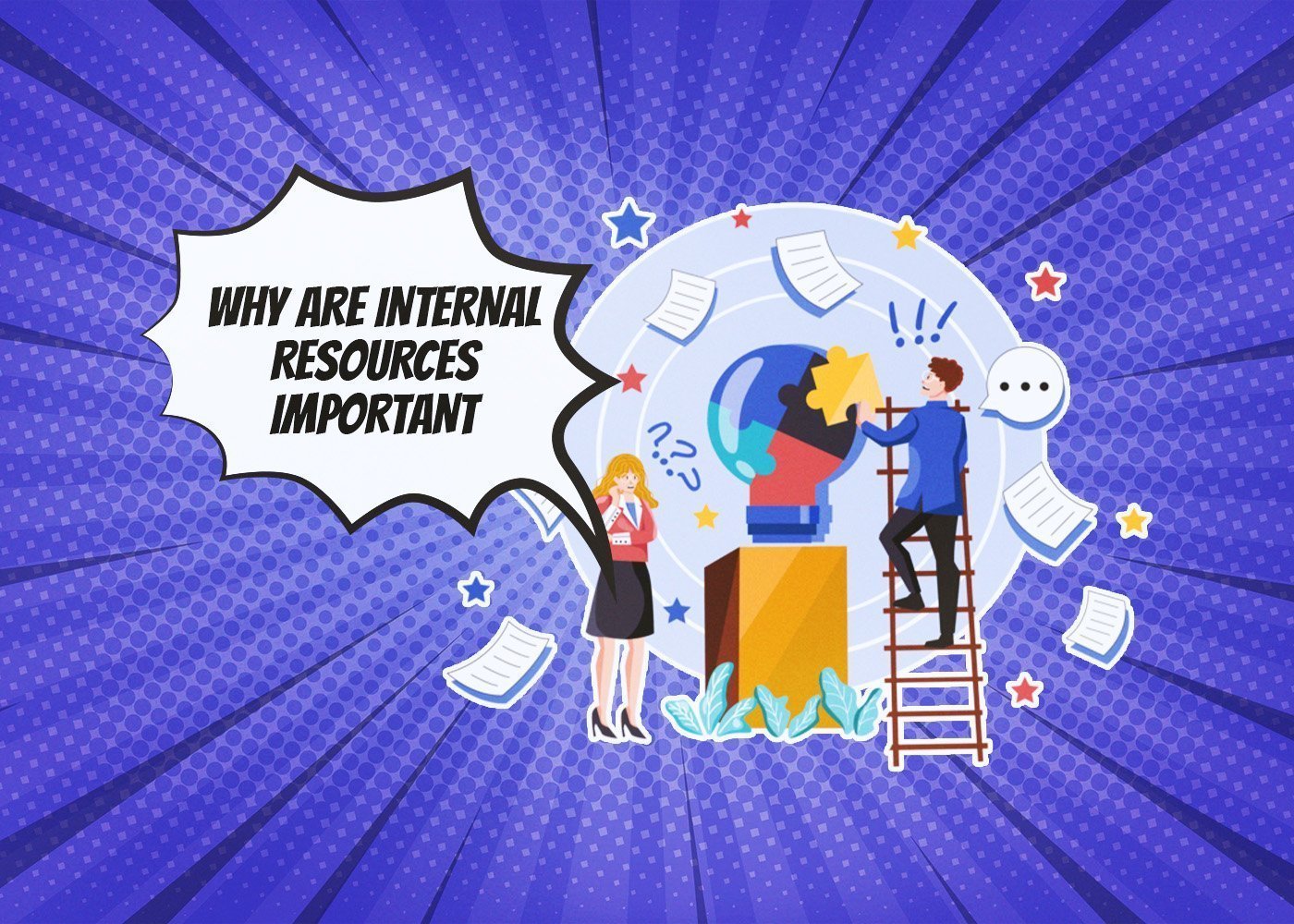Internal resources are an integral part of any business organization. These resources are the assets that a company possesses, including human resources, organizational structure, financial resources and technological resources. They impact the business’s performance and profitability in a significant way. One of the primary reasons why internal resources are crucial is that they empower the organization to develop grow and adapt to changing market trends efficiently. For instance a company with a well-structured and motivated workforce can easily adapt to changes in the market while a company that needs such resources may need help to stay afloat.
Internal resources also enhance the internal efficiency of an organization. With the right tools and equipment a company can execute its operations with ease resulting in higher productivity levels. Similarly financial resources ensure the company can meet its financial obligations as well as invest in new ventures to increase profitability.
Moreover internal resources are also vital to maintaining a competitive edge in the industry. A company with advanced technologies can create innovative products and services that attract customers and keep them loyal to the brand.
In conclusion internal resources play a crucial role in shaping an organization’s success. Companies that invest in their internal resources reap the benefits of growth efficiency and profitability ensuring they stay competitive in the market.
What Is Meant By Internal Resource In Business?
Internal resources in business refer to a company’s assets and capabilities to operate its activities smoothly. These resources can be tangible assets such as buildings equipment and inventory as well as intangible assets such as trademarks patents and organizational knowledge. They can also be the skills knowledge and expertise of employees and the resources required to manufacture products and deliver services.
Internal resources are crucial for businesses as they allow them to operate efficiently effectively and gain a competitive advantage. For example having an experienced and dedicated workforce can result in high employee productivity and lower turnover rates which can positively impact a company’s bottom line. Moreover, an efficient supply chain can enable a firm to quickly and responsibly respond to sudden market changes and customer demands.
Internal resources can have both short and long-term impacts on a company’s profitability and sustainability. Therefore businesses must invest resources in developing maintaining and optimizing them regularly. The optimization of internal resources can be achieved through various means such as regular employee training and development programs upgrading and maintaining equipment and investing in technology to improve processes.
In conclusion internal resources play a significant role in a business’s operations and success. They can help businesses improve their processes and products resulting in higher quality and greater customer satisfaction. By investing in internal resources businesses can better position themselves competitively and sustainably in their respective markets.
What Is Internal And External Resources?
Internal and external resources are two distinct categories of assets that can be used to achieve success in business. Internal resources refer to the assets that a company already possesses such as its employees equipment and knowledge. These are the resources that a company can control and leverage to achieve its goals.
External resources on the other hand are the assets that come from outside the company including funding from investors partnerships with other companies and market demand. External resources are important because they provide access to new knowledge and skills to help a company grow and expand.

Internal resources are important because they provide stability and control for a company. By utilizing internal resources effectively a company can create a strong foundation for growth and mitigate the risks of external factors such as market fluctuations and competition.
External resources are important because they provide access to new opportunities and knowledge. By collaborating with other companies a business can learn about new markets or technologies that it may not have otherwise discovered.
In conclusion, internal and external resources are important for the success of any business. By leveraging internal resources to create a strong foundation and accessing external resources to unlock new opportunities a company can achieve sustainable growth and success.
What Is An Example Of Internal Resources In A Company?
Internal resource in a company refer to the assets that a firm possesses such as skills knowledge infrastructure and capital. These resources are the backbone of an organization’s success as they help the company to develop a competitive advantage over its rivals. One example of internal resources in a company is human capital. This includes the collective knowledge skills and experiences of an organization’s employees.
For instance a company that employs a highly skilled and experienced workforce can create innovative products or services that meet the changing needs of its clients. Additionally internal resources can comprise the company’s physical assets such as its manufacturing facilities office equipment and technology infrastructure. Utilizing these resources efficiently can result in cost savings and increased productivity.
Another example of internal resources in a company is its financial capital. This includes the funds available to the business to invest in new projects and initiatives. If a company has strong financial resources it can easily adapt to changes in the market acquire new customers and expand its operations.
In conclusion having robust internal resources is critical for the success of any organization. Companies should make it their top priority to develop and maintain strong internal resources that can enable them to remain competitive in their industry.








